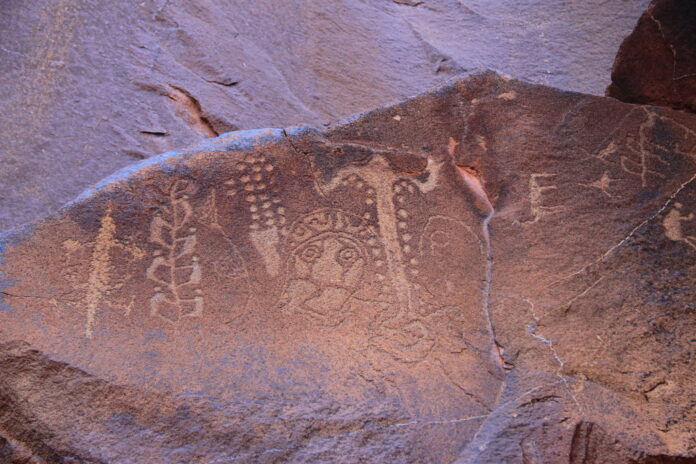World-leading research spearheaded by the Western Australian Government and the Murujuga Aboriginal Corporation (MAC) is setting new benchmarks for protecting one of Australia’s most important cultural treasures. The Murujuga Rock Art Monitoring Program, now delivering the world’s most extensive dataset on rock art conservation, is being hailed as a landmark initiative that marries scientific rigour with Indigenous stewardship to safeguard ancient art sites on the Burrup Peninsula and Dampier Archipelago.
A Collaborative, Science-Led Endeavour
At the heart of the project is an ambitious monitoring framework that tracks air quality, rock surface chemistry, rainfall and pH levels throughout the region. This comprehensive approach is aimed at identifying and mitigating factors that could threaten the pristine condition of Murujuga’s ancient rock art. With more than one million petroglyphs adorning the rocks—a rich narrative of human presence spanning tens of thousands of years—the protection of this heritage is of paramount importance to both traditional custodians and the wider community.
The program, co-managed by MAC and the Department of Water and Environmental Regulation (DWER), has gathered a trove of data over the past 18 months. Among its key findings is the reassuring evidence that the rock art is not being compromised by acid rain or industrial deposition as some earlier theories had suggested. In fact, declining levels of pollutants such as nitrogen dioxide and sulphur dioxide, when compared with measurements dating back to 2014, reflect the positive environmental strides the region has made.
Establishing Interim Environmental Quality Criteria
A major outcome of the research is the development of an interim set of Environmental Quality Criteria (EQC). These criteria have been specifically formulated to define acceptable ambient air quality levels in the vicinity of the rock art. Acting as an early warning system, the EQC will enable regulators to introduce prompt management responses if key environmental thresholds are breached. The intention is to adjust and refine these criteria over the next two years, drawing on continually updated evidence to establish even more robust, science-based final standards.
Environment Minister Matthew Swinbourn emphasised the significance of this new framework. “The successful development of these interim EQCs could not have been achieved without the deep knowledge and support of the Murujuga Circle of Elders, the MAC Board, our dedicated rangers and a highly skilled team of scientists. This initiative exemplifies what can be achieved through transparent, risk based and adaptive management in protecting our shared heritage,” he said. His remarks underscore the Government’s commitment to ensuring that environmental management is informed by both advanced scientific research and the lived experience of Traditional Custodians.
Stepping Back in Time: Historical and Industrial Context
The Murujuga area is steeped in history. Its rock art, some of which dates back tens of thousands of years, stands as a monumental record of Australia’s Aboriginal heritage. This cultural legacy has long been challenged by the very modern demands of industrial development. The Burrup Peninsula, rich in natural resources and an important hub for mining and energy production, has been a focal point of environmental and cultural debates for decades. High levels of industrial emissions recorded during the 1970s, for example, are thought to have contributed to changes in the porosity of granophyre—one of the five rock types under study. Although this historical impact is now being better understood, the present data indicates that modern industrial operations, under stricter controls compared to past decades, are no longer exerting the same damaging influence on the rock art.
This forward-thinking research and its subsequent policy implications come on the heels of the Murujuga Rock Art Strategy, launched in 2019. The Strategy itself was conceived in response to increasing calls for improved protection of the heritage site amid expanding industrial interests in the region. By integrating rigorous monitoring with traditional cultural governance, the program bridges the gap between scientific inquiry and cultural preservation, setting a new standard for heritage management in Western Australia.
Indigenous Empowerment and Local Stewardship
One element that sets the Murujuga initiative apart is its commitment to Indigenous leadership. MAC, representing the Murujuga traditional custodians, has been at the forefront of the project from its inception. By transitioning from a predominantly academic research model to one where traditional owners and their rangers lead the ongoing monitoring, the program is reinforcing self-determination and cultural stewardship. Independent Chair Professor Stephen Van Leeuwen, head of the Murujuga Rock Art Stakeholder Reference Group, commended the approach. “Our work emphasises transparency and integrity. The rigorous, repeatable research methodologies we employ not only enhance our understanding of environmental impacts but also empower the Murujuga community to take direct responsibility in protecting their heritage,” he said.
The move towards public accountability is set to intensify, with regular reporting of environmental performance against the interim EQC scheduled to commence in 2025. This commitment to transparency has been widely welcomed by environmental advocates and heritage experts alike, representing a significant step forward in the long-term conservation of one of Australia’s most iconic cultural sites.
Economic and Environmental Ripple Effects
The implications of these research outcomes extend far beyond heritage conservation. Adjusting industrial emissions in the Pilbara region, while posing challenges for large-scale operations such as mining and LNG facilities, has the potential to serve as a catalyst for cleaner production technologies across Western Australia. Over the coming years, investment in improved air quality management may well enhance the region’s environmental credentials, balancing economic development with the urgent need to safeguard Indigenous culture.
While some industry representatives have expressed concerns over the potential costs of more stringent controls, the consensus among environmental scientists is that a precautionary approach is warranted. The detailed monitoring and interim criteria offer a measured path forward, enabling industries to adapt their practices in line with evolving scientific knowledge without jeopardising economic viability.
Looking Ahead
As the Murujuga Rock Art Monitoring Program continues into its next phase, all eyes will be on both the refinement of the Environmental Quality Criteria and the broader implications of this pioneering work. Future research is expected to delve deeper into complex phenomena such as microbial interactions that may contribute to rock deterioration—ensuring that every potential threat to this irreplaceable heritage is thoroughly understood and mitigated.
In an era of rapid industrial change and environmental uncertainty, the collaboration between the Western Australian Government and MAC serves as a model of proactive heritage management and cultural responsibility. With science and tradition working hand in hand, the legacy of Murujuga’s rock art is being carefully preserved for future generations—a testament to what can be achieved when modern technology and ancient wisdom come together.

